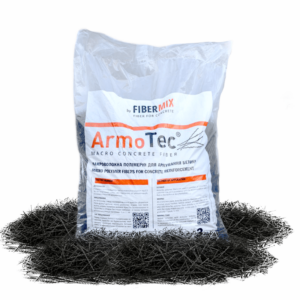I receive numerous questions regarding concrete pouring and fiber-reinforced concrete.
The following questions are the most frequently asked.
1. How many shovels of cement are needed for the concrete?
Not only the quantity of cement but also the ratio of water significantly influences the final strength of the concrete. Since I’m not a concrete technologist, I don’t intend to delve into scientific explanations, but home concreting is not rocket science.
The person assisting with the concrete mixer in most cases is not a qualified concrete technologist. Millions of cubic meters of concrete have been made using conventional methods, yet premature failures still occur.
However, there is a rule of thumb that can be applied to most home concreting, ensuring success:
5 parts gravel, 1 part cement, and 0.6 parts water, based on weight. So, approximately 50 kg gravel, 10 kg cement, and 600 ml water.
But what is this “unit”? Do we shovel the water into the mixer?
That’s correct, which is why if you want to strive for precise mixtures, you’ll need to use measuring containers. In a 10-liter bucket, you can fit 10 kg of water, approximately 12 kg of cement, and roughly 18 kg of gravel.
After that, it’s easy to calculate that if you have a 120-liter concrete mixer, it will produce about 60 liters of concrete, so you’ll need 6 buckets of material.
- 4.5 buckets of gravel
- 3/4 bucket of cement (9 kg, a bit more than 1/3 of a bag)
- Half a bucket of water
If the bucket is 10 liters!
The water will push out the air from between the gravel and cement particles, so you’ll end up with roughly 60 liters of concrete. That’s roughly one wheelbarrow 😅.
A shovel of cement is much lighter than a shovel of gravel, so it’s not true that you should add 1 shovel of cement for every 5 shovels of gravel.
You can further increase the strength and load-bearing capacity of the concrete by adding ArmoTec macro fibers, plus you eliminate the risk of cracking.
2. How much water can I add to the concrete?
In the previous point, we discussed it, but I don’t think anyone will be measuring the concrete ingredients with a bucket. It’s advisable to mix concrete to a consistency that is not too fluid but still workably plastic. The water-cement ratio is often the factor most commonly compromised during concreting.
In concrete plants, plasticizers are used to adjust the water-cement ratio effectively.
Overly diluted concrete significantly reduces its strength, increases the risk of cracking because the excess water consumed by the cement during hydration or evaporated leaves voids in the concrete, further inducing shrinkage.
To combat cracks resulting from shrinkage, use ArmoTec!
Don’t overwater the concrete, instead, work it! 😅💪🏻
3. How long do we water the concrete?
The concrete’s curing time is 28 days. During this period, it reaches over 90% of its strength. Concrete consumes water during the curing process, which is why it needs to be watered, but I don’t think anyone waters it for 28 days straight.
As a rule of thumb, ensure the concrete stays moist for at least a week after pouring, but merely covering it with plastic isn’t sufficient. The plastic protects it from rapid evaporation in hot weather, but you always need to replenish the water underneath because the concrete requires it for proper curing.
4. Can concrete be poured directly onto the ground?
No. Always prepare a so-called “mirror” underneath the concrete slab. This serves as the foundation of the concrete, at least 15 cm thick, compacted with a plate compactor, made of gravel or crushed stone. This prevents cracking due to freezing. Neither the reinforcement mesh nor ArmoTec can replace the proper base.
5. Does ArmoTec really replace the need for reinforcement?
In certain cases, yes.

For these concrete structures, you can confidently replace the need for reinforcement mesh.
- Slab foundation (for lightweight structures/houses)
- Sidewalks
- Screed (floor concrete)
- Screed for installations
- Ground-level stairs
- Car parking area
- Basement floor slabs
And for every structure where the reinforcement mesh’s role is load distribution and crack prevention.
Don’t use it as a replacement for reinforcement mesh, only as additional reinforcement.
- beams
- self-supporting stairs
- pillars
- lintels
- and bridges
And for any other structures that need to withstand various shear and bending forces, unless you have structural engineers capable of calculating these forces and supporting the structure with the method of replacing shear reinforcement with macroscales, as was done for the first time in the world with the precast grandstand elements of the Debrecen Nagyerdei Stadium, and since then in numerous other places, such as the concrete structures of the New York City subway tunnels, which were completely free of reinforcement mesh.
Learn everything you need to know about fiber-reinforced concrete in just one minute: Video








